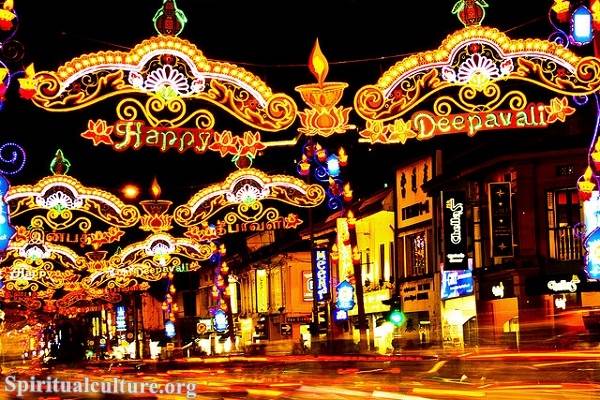Britain is a landscape sculpted by stone and story, where castles serve as far more than mere fortifications. They are the silent witnesses to the evolution of a nation’s soul, standing as enduring monuments to faith, power, and the human spirit. From the rugged cliffs of Cornwall to the volcanic rocks of Scotland, these structures hold the echoes of prayers, the shadows of tragedy, and the light of royal pageantry. At Spiritual Culture, we believe that true fame is not just about tourist footfall; it is about the depth of the legacy left behind.
In this guide, we journey beyond the battlements to uncover the spiritual and cultural resonance of Britain’s most iconic strongholds. We examine how these sites have functioned not only as centers of military might but as sanctuaries of worship, mythological gateways, and custodians of national identity. Whether it is a chapel built by a saintly queen or a fortress steeped in Arthurian legend, each castle on this list represents a unique chapter in the spiritual narrative of the British Isles.
The following ranking is based on a synthesis of historical impact, architectural majesty, and spiritual significance as of the Current Time of Writing on November 27, 2025. We invite you to walk these ancient halls with us, recognizing that every stone was laid with intention, and every tower reaches toward something greater than itself.
Table of the Top 10 Most Famous Castles in Britain with the Greatest Spiritual Influence
| Rank | Castle Name | Location | Core Spiritual/Cultural Value |
|---|---|---|---|
| 1 | Tower of London | London, England | Sacrifice, Divine Authority & The Crown’s Burden |
| 2 | Windsor Castle | Berkshire, England | Chivalric Faith, Monarchy & St George’s Legacy |
| 3 | Edinburgh Castle | Edinburgh, Scotland | The National Soul & Saintly Benevolence |
| 4 | Tintagel Castle | Cornwall, England | Mythic Gateways & The Arthurian Spirit |
| 5 | St Michael’s Mount | Cornwall, England | Monastic Devotion, Pilgrimage & Divine Alignment |
| 6 | Stirling Castle | Stirling, Scotland | Sovereign Destiny & The Rite of Coronation |
| 7 | Caernarfon Castle | Gwynedd, Wales | Imperial Majesty & The Symbolism of Dominion |
| 8 | Warwick Castle | Warwickshire, England | Feudal Resilience & The Archetype of Power |
| 9 | Alnwick Castle | Northumberland, England | Ancestral Guardianship & The Living Myth |
| 10 | Leeds Castle | Kent, England | Feminine Sanctuary, Peace & Royal Repose |
Top 10. Leeds Castle
Often described as the “loveliest castle in the world,” Leeds Castle rises from a tranquil lake in Kent, offering a stark contrast to the aggressive military architecture found elsewhere in Britain. For centuries, this site served as a dower house—a gift and sanctuary for the Queens of England. From Eleanor of Castile to Henry VIII’s first wife, Catherine of Aragon, the castle was a place of refinement and feminine influence, shaping a culture of courtly grace rather than brute force. Its history is less about the clash of swords and more about the quiet diplomacy and personal devotion of the women who shaped the monarchy.
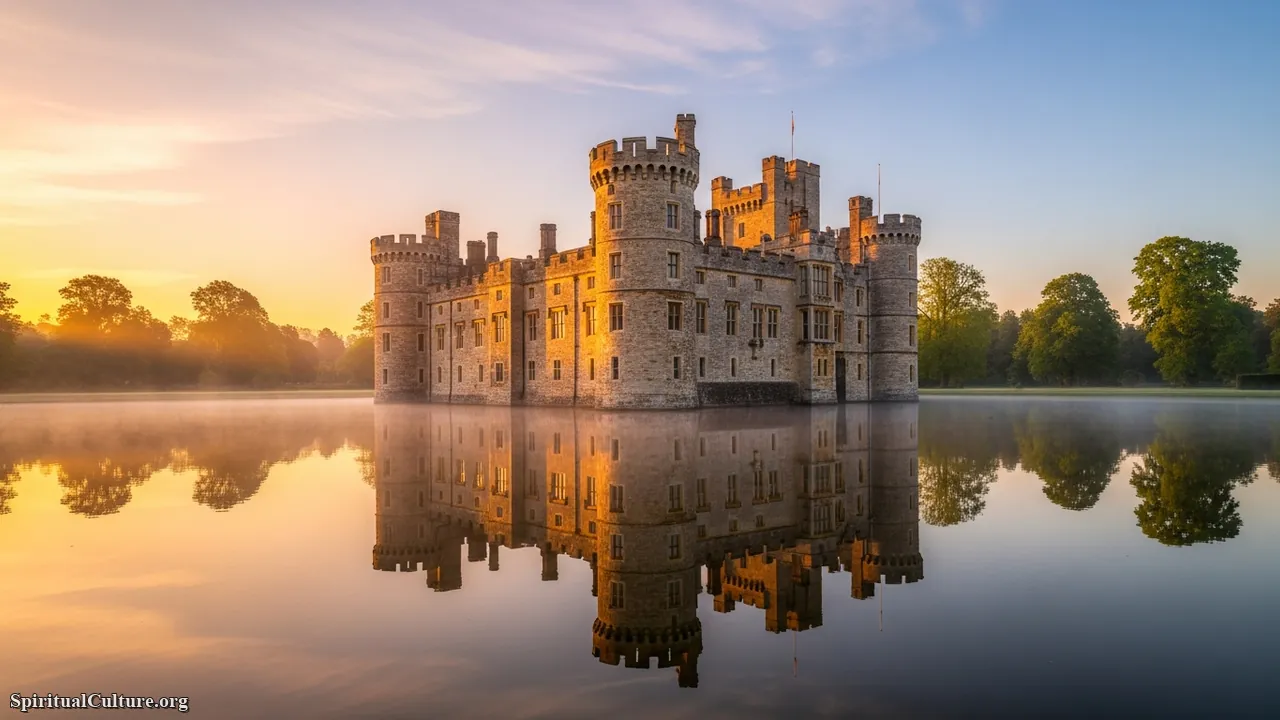
We rank Leeds Castle here because it represents the spiritual necessity of sanctuary. In the turbulent history of Britain, leaders required places of retreat to cultivate the spirit and find rest. The castle’s chapel and the Gloriette testify to a life where faith was interwoven with domesticity and governance. It reminds us that spiritual strength often flourishes best in environments of beauty and tranquility, rather than in the harshness of the battlefield.
Today, Leeds Castle stands as a testament to preservation and peace. It invites us to reflect on the role of beauty in the human experience and the importance of preserving spaces that nurture the soul. The enduring legacy here is one of stewardship; it teaches us that power must be balanced with grace, and that a fortress can be a home as much as a stronghold.
Cultural & Spiritual Highlights:
- The Queen’s Sanctuary: Historically the property of six medieval queens, symbolizing the feminine aspect of royal power.
- Religious Foundation: Originally the site of an Augustinian priory (Leeds Priory) founded in 1119, grounding the site in monastic roots.
- Preservation: Renowned for its impeccable preservation, symbolizing the care of heritage for future generations.
Top 9. Alnwick Castle
Known as the “Windsor of the North,” Alnwick Castle has been the seat of the Percy family for over 700 years, representing a profound continuity of lineage and regional identity. Standing guard against the Scottish borders, it is a fortress of immense scale and rugged beauty. In modern culture, it has gained global fame as a filming location for Harry Potter, which, while pop-culture, taps into a deeper human fascination with magic, mystery, and the “other”—themes that have always been central to British spiritual folklore.
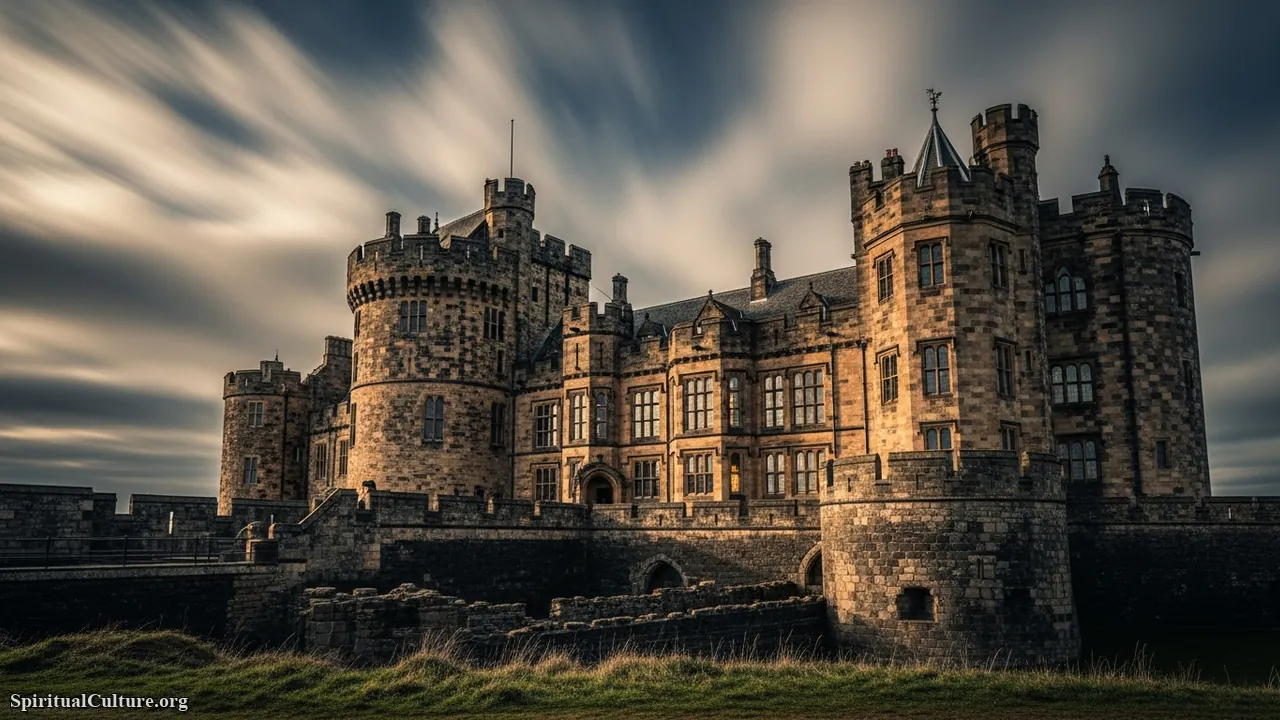
At Spiritual Culture, we recognize Alnwick’s significance in its demonstration of ancestral guardianship. The Percy family’s stewardship over seven centuries is a rare example of living history, where the connection between a family, their land, and their people remains unbroken. This deep-rootedness offers a spiritual lesson in loyalty and the responsibility of heritage. The castle is not a museum piece but a living home, breathing with the history of the borders.
The duality of Alnwick—as a historic border fortress and a modern symbol of magical imagination—speaks to the versatility of culture. It reminds us that heritage is not static; it evolves to capture the imagination of new generations. Whether through the lens of medieval history or modern myth-making, Alnwick encourages us to find the “magic” inherent in history and the stories we tell to define our past.
Cultural & Spiritual Highlights:
- Percy Lineage: Home to the Dukes of Northumberland since 1309, representing one of England’s most powerful historical dynasties.
- Harry Potter Connection: Served as Hogwarts, bridging historical architecture with modern cultural mythology.
- The Library: Houses over 14,000 books, symbolizing the preservation of knowledge and culture through the ages.
Top 8. Warwick Castle
Warwick Castle is the quintessential medieval fortress, a towering structure that dominates the River Avon and the imagination of anyone who beholds it. Founded by William the Conqueror, it evolved into a symbol of the immense power held by the Earls of Warwick, the “Kingmakers” of English history. Its stones have witnessed the most pivotal moments of political maneuvering and feudal strife, embodying the raw, masculine energy of the medieval era.
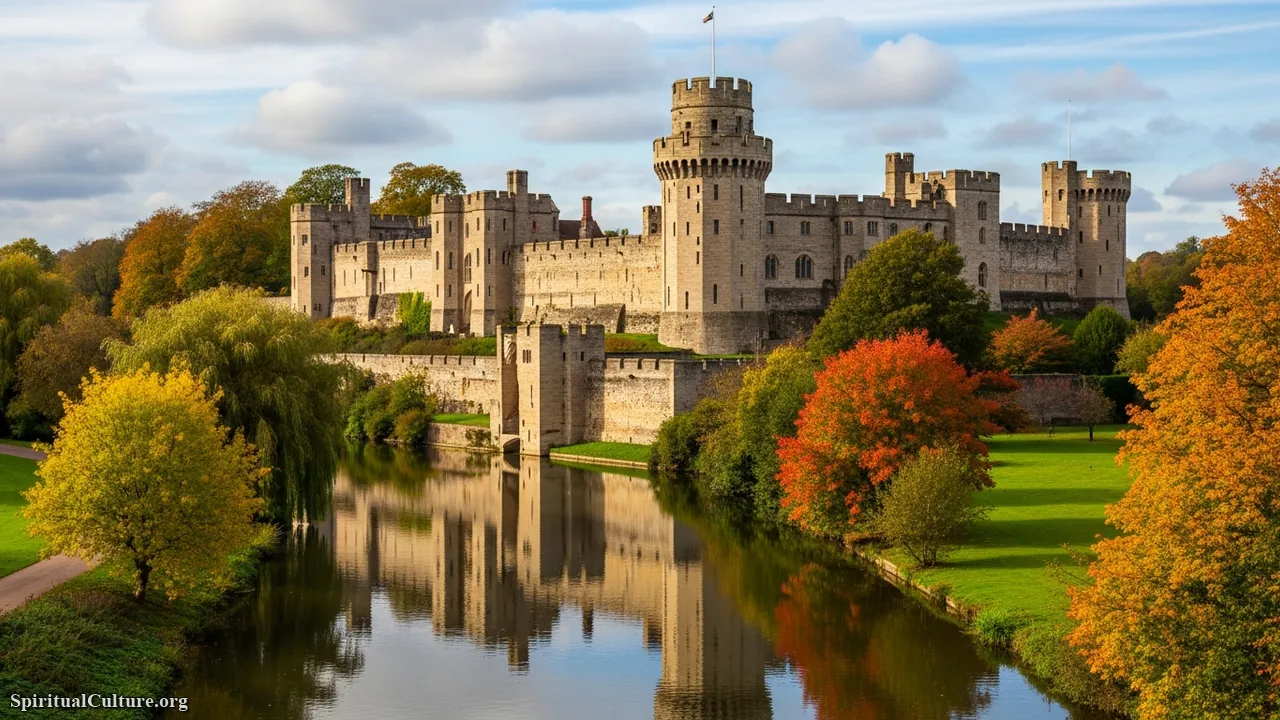
We include Warwick for its embodiment of resilience and the archetype of the stronghold. Spiritually, castles like Warwick represent the human desire for security and order in a chaotic world. The collegiate Church of St Mary nearby, with the Beauchamp Chapel, houses some of the finest medieval religious art in Europe, linking the martial power of the castle directly to the spiritual hope for salvation and legacy. The Earls fought for earthly power but built magnificent chapels to secure their heavenly place.
Visiting Warwick today offers a reflection on the transience of power. The Kingmakers are gone, but the stone remains. It teaches us that while political influence is fleeting, the cultural and architectural legacy we leave behind can endure for a millennium. It stands as a monument to human ambition, tempered by the inevitable passage of time.
Cultural & Spiritual Highlights:
- The Kingmaker: Associated with Richard Neville, 16th Earl of Warwick, a central figure in the Wars of the Roses.
- Beauchamp Chapel: While not inside the walls, the nearby chapel (built by the Castle’s lords) is a masterpiece of medieval ecclesiastical art.
- Architectural Evolution: A perfect example of the transition from wooden motte-and-bailey to stone fortress to country house.
Top 7. Caernarfon Castle
Caernarfon Castle is a brute statement of imperial intent, built by Edward I not just to conquer Wales, but to psychologically dominate it. Modeled on the walls of Constantinople, its banded masonry and polygonal towers were designed to evoke the authority of the Roman Empire and the myths of glorious antiquity. It is a UNESCO World Heritage site that speaks of a clash of cultures—the might of the English crown colliding with the fierce independence of the Welsh spirit.
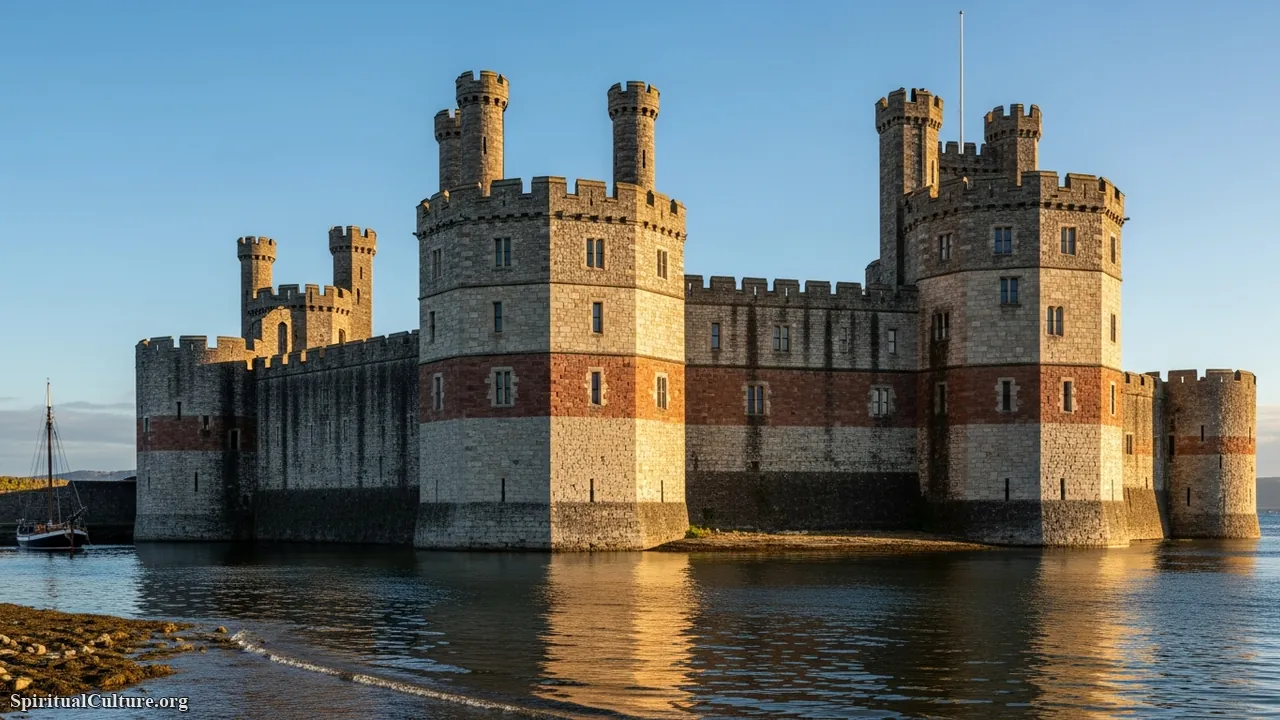
From a Spiritual Culture perspective, Caernarfon is fascinating for its manipulation of symbolism. Edward I deliberately utilized local legends, such as the dream of Macsen Wledig (Magnus Maximus), to legitimize his rule, intertwining political conquest with spiritual myth. The site is also the traditional venue for the Investiture of the Prince of Wales, a ceremony that attempts to bridge the divide between two nations through ritual and pageantry.
The castle stands today as a complex monument. It is a symbol of oppression to some and a masterpiece of military architecture to others. It invites deep reflection on how history is written by victors and how spiritual legends can be co-opted for political gain. Yet, its sheer grandeur commands a respect that transcends its original martial purpose.
Cultural & Spiritual Highlights:
- UNESCO Status: Part of the “Castles and Town Walls of King Edward in Gwynedd” World Heritage Site.
- Roman Symbolism: Architectural choices (colored bands) were designed to echo the walls of Constantinople and Roman imperial power.
- Investiture Site: The ceremonial spiritual home for the investiture of the Prince of Wales (most recently Charles in 1969).
Top 6. Stirling Castle
Sitting atop a volcanic crag, Stirling Castle is the “Brooch of Scotland”—the strategic pin that holds the Highlands and Lowlands together. It is a place of immense national pride, having been the childhood home of Mary, Queen of Scots, and the site of multiple coronations. The Renaissance architecture of the Royal Palace within the walls reflects a time when Scotland looked outward to Europe, embracing culture, art, and enlightened thought.

Stirling ranks highly because of its connection to sovereign destiny. The Chapel Royal here was the site of the coronation of the infant Mary, a moment where political fragility met divine right. The castle represents the spiritual heart of Scottish independence, looming over the battlefields of Stirling Bridge and Bannockburn. It is a place where the fate of a nation was repeatedly decided, not just by swords, but by the anointed rites of kingship.
The restoration of the Great Hall and the Palace allows us to see the vibrant color and life that once filled these gray walls. It reminds us that history was lived in technicolor, filled with music, prayer, and debate. Stirling teaches us about the resilience of national identity and the sacred trust placed in leadership during times of crisis.
Cultural & Spiritual Highlights:
- Chapel Royal: Built in 1594 for the baptism of Prince Henry, representing the divine right of Scottish monarchs.
- Coronation Site: The crowning place of Mary, Queen of Scots, in 1543.
- Strategic Soul: Historically considered the key to the Kingdom of Scotland; “He who holds Stirling, holds Scotland.”
Top 5. St Michael’s Mount
Rising from the sea off the coast of Cornwall, St Michael’s Mount is the British counterpart to France’s Mont-Saint-Michel. It is a tidal island that demands a journey, accessible only by causeway at low tide or by boat. For centuries, this has been a site of pilgrimage, dedicated to the Archangel Michael, who is said to have appeared here to fishermen in 495 AD. It is a place where the veil between the earthly and the divine feels incredibly thin.
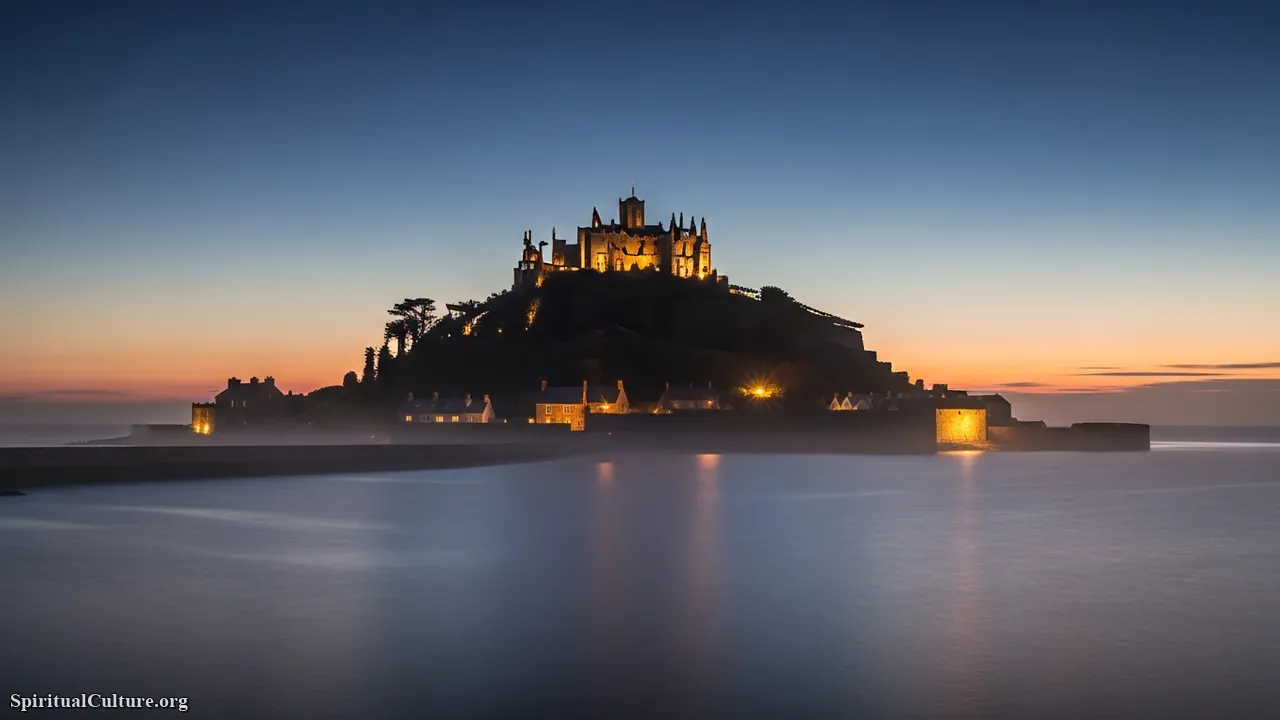
We place St Michael’s Mount in the top 5 for its profound spiritual alignment. It is situated on the powerful “St. Michael Line,” a supposed ley line running through significant spiritual sites in England. Unlike the military fortresses on this list, the Mount’s primary history is monastic. It speaks of isolation, prayer, and the search for God amidst the roar of the ocean. The climb to the church at the summit is a physical metaphor for spiritual ascent.
Today, the Mount is still home to the St Aubyn family and a living community, yet it retains its sacred atmosphere. It serves as a reminder of the ancient Christian tradition of seeking God in the wilderness. The preservation of the priory church invites visitors to pause and listen to the silence, finding a peace that the mainland often cannot provide.
Cultural & Spiritual Highlights:
- Pilgrimage Site: A major destination for medieval pilgrims and a Priory of the Benedictine order.
- Apparition Legend: The legendary site of a vision of Archangel Michael in the 5th Century.
- Ley Line: Central point of the St. Michael Ley Line, attracting those interested in earth mysteries and spirituality.
Top 4. Tintagel Castle
Perched on the jagged cliffs of North Cornwall, Tintagel is a place of ruins, wind, and waves, yet it holds a grip on the global imagination that few intact castles can match. It is inextricably linked with the legend of King Arthur, said to be the place of his conception through the magic of Merlin. Before the medieval castle was built, it was a high-status settlement trading with the Mediterranean, hinting at a deep, ancient importance long before the stones we see today were laid.
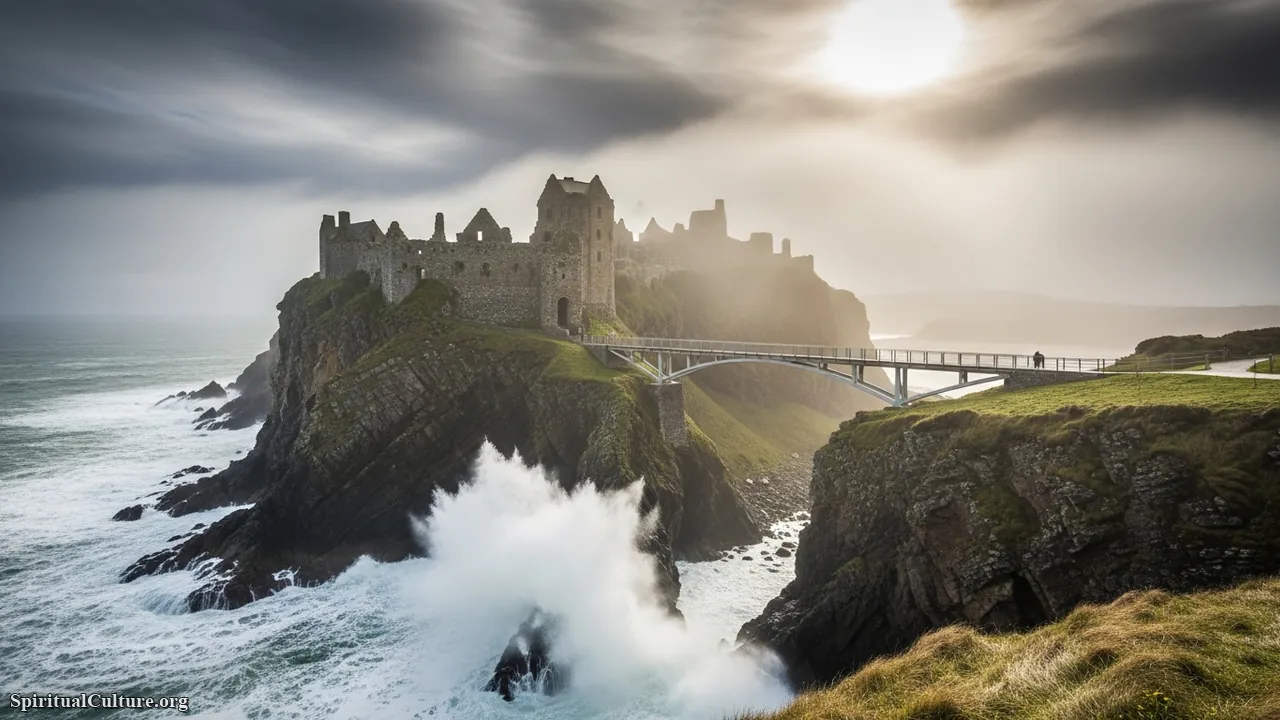
Tintagel’s spiritual value lies in the power of myth. It is the threshold between history and legend, the “Otherworld” of Celtic tradition brought to life. At Spiritual Culture, we view Tintagel not just as a ruin, but as a temple to the human need for heroes and magical origins. The recent addition of the footbridge reconnects the two halves of the site, symbolizing the bridging of the gap between the present and the legendary past.
Walking the ruins of Tintagel is an elemental experience. It forces a confrontation with nature and time. The physical castle is crumbling, but the spirit of the place—the “Matter of Britain”—is indestructible. It teaches us that stories are the most durable architecture of all, capable of outlasting the stone walls that were built to house them.
Cultural & Spiritual Highlights:
- Arthurian Legend: Famous as the legendary birthplace of King Arthur and the seat of King Mark of Cornwall.
- Dark Age Trade: Archaeological evidence proves it was a royal citadel connecting Britain to the Byzantine world in the 5th–7th centuries.
- Merlin’s Cave: A sea cave beneath the castle steeped in mystical folklore and accessible at low tide.
Top 3. Edinburgh Castle
Domineering the skyline from its perch on Castle Rock, Edinburgh Castle is the absolute icon of Scotland. It has been a royal residence, a military garrison, and a prison. But at its heart lies the oldest building in Edinburgh: St Margaret’s Chapel. Built in the 12th century, it is dedicated to Queen Margaret, a saint renowned for her charity and piety. This tiny chapel has survived every siege, standing as a quiet miracle of peace in the center of a fortress of war.
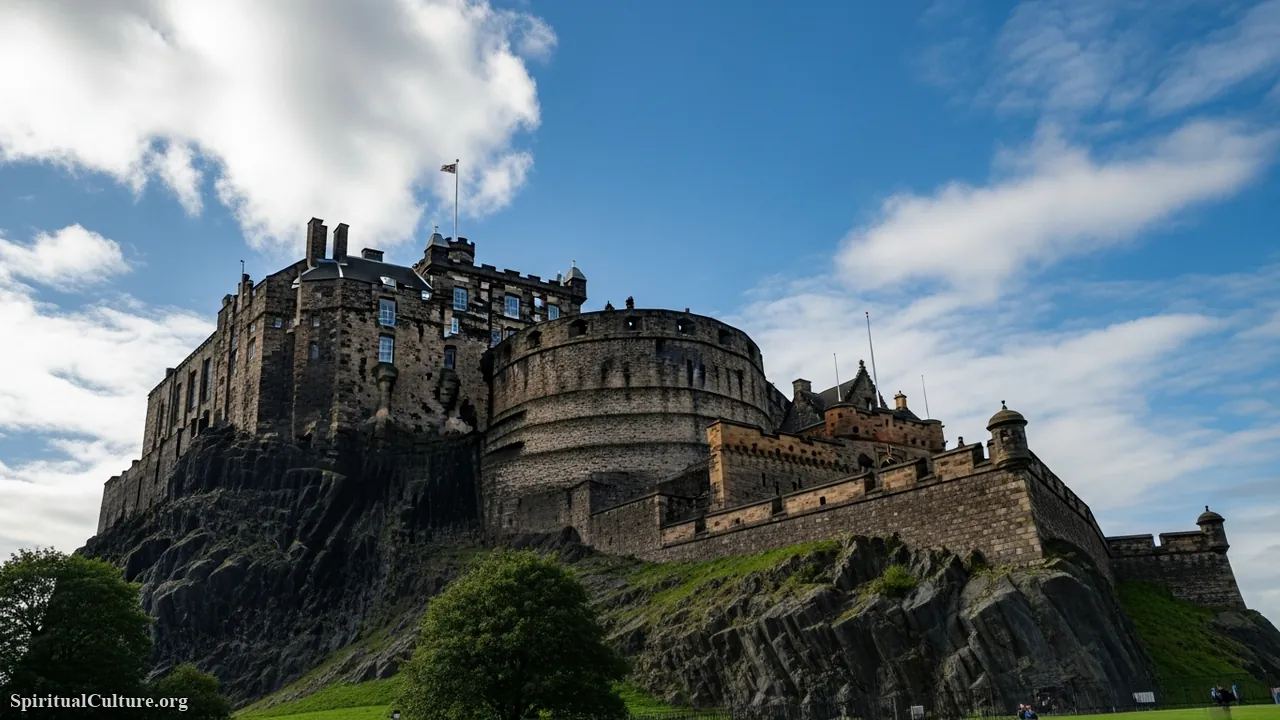
We rank Edinburgh Castle in the top 3 because it houses the National Soul. It is the keeper of the Honours of Scotland (the Crown Jewels) and the Stone of Destiny—ancient, sacred symbols of monarchy used for centuries. The castle represents the endurance of a people. The contrast between the heavy cannons (like Mons Meg) and the intimate sanctity of St Margaret’s Chapel perfectly illustrates the dual nature of power: the need for defense and the need for faith.
The castle serves as a focal point for national celebrations and remembrances, including the Royal Edinburgh Military Tattoo. It is a gathering place for the collective consciousness of the Scots. The survival of the spiritual center (the Chapel) amidst the destruction of the surrounding fortifications serves as a powerful lesson on what truly lasts.
Cultural & Spiritual Highlights:
- St Margaret’s Chapel: The oldest surviving building in Edinburgh (c. 1130), a place of continuous worship.
- The Stone of Destiny: The ancient, sacred stone used for the coronation of Scottish (and later British) monarchs.
- Honours of Scotland: The oldest crown jewels in the British Isles, hidden and protected through wars.
Top 2. Windsor Castle
Windsor Castle is the oldest and largest occupied castle in the world, having been a home to 40 monarchs. It is the physical embodiment of the British Monarchy’s continuity. However, its spiritual heart beats in St George’s Chapel, a masterpiece of Gothic architecture and the spiritual home of the Order of the Garter—the pinnacle of British chivalry. This is where royal weddings are celebrated, and where monarchs, including the late Queen Elizabeth II, are laid to rest.
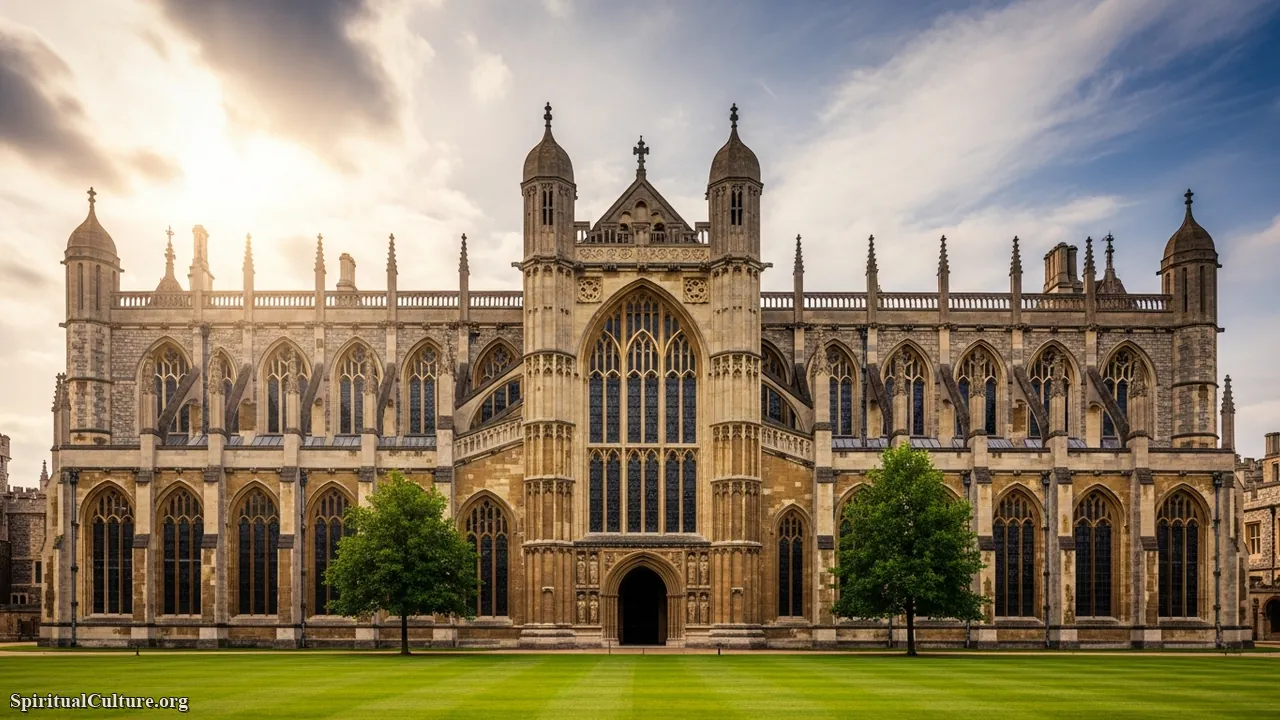
Windsor takes the second spot due to its living connection to Chivalric Faith. St George’s Chapel is not a museum; it is a Royal Peculiar (under the direct jurisdiction of the Monarch) and a working church offering daily prayer for the nation. The banners of the Garter Knights hanging in the Quire represent a code of honor, duty, and service that has ostensibly guided the leadership of the realm for centuries. It is the intersection of the earthly crown and the heavenly mandate.
The presence of the royal tombs adds a layer of profound solemnity. To visit Windsor is to walk through the necropolis of kings, reminding us of the mortality of rulers. It is a place that balances the pageantry of the state with the humility of the grave, offering a unique perspective on the burden and sanctity of leadership.
Cultural & Spiritual Highlights:
- St George’s Chapel: One of the finest examples of Perpendicular Gothic architecture and a Royal Peculiar.
- Order of the Garter: The spiritual home of the senior order of British Chivalry, founded in 1348.
- Royal Necropolis: Final resting place of Queen Elizabeth II, Henry VIII, Charles I, and many others.
Top 1. Tower of London
The Tower of London is without equal. It is the most famous castle in Britain not merely for its architecture, but for the sheer weight of history compressed within its walls. Founded by William the Conqueror to awe the citizens of London, it has been a palace, a fortress, a mint, a zoo, and most infamously, a prison and place of execution. Yet, it holds the ultimate spiritual rank because it is the repository of the nation’s most sacred symbols: the Crown Jewels.
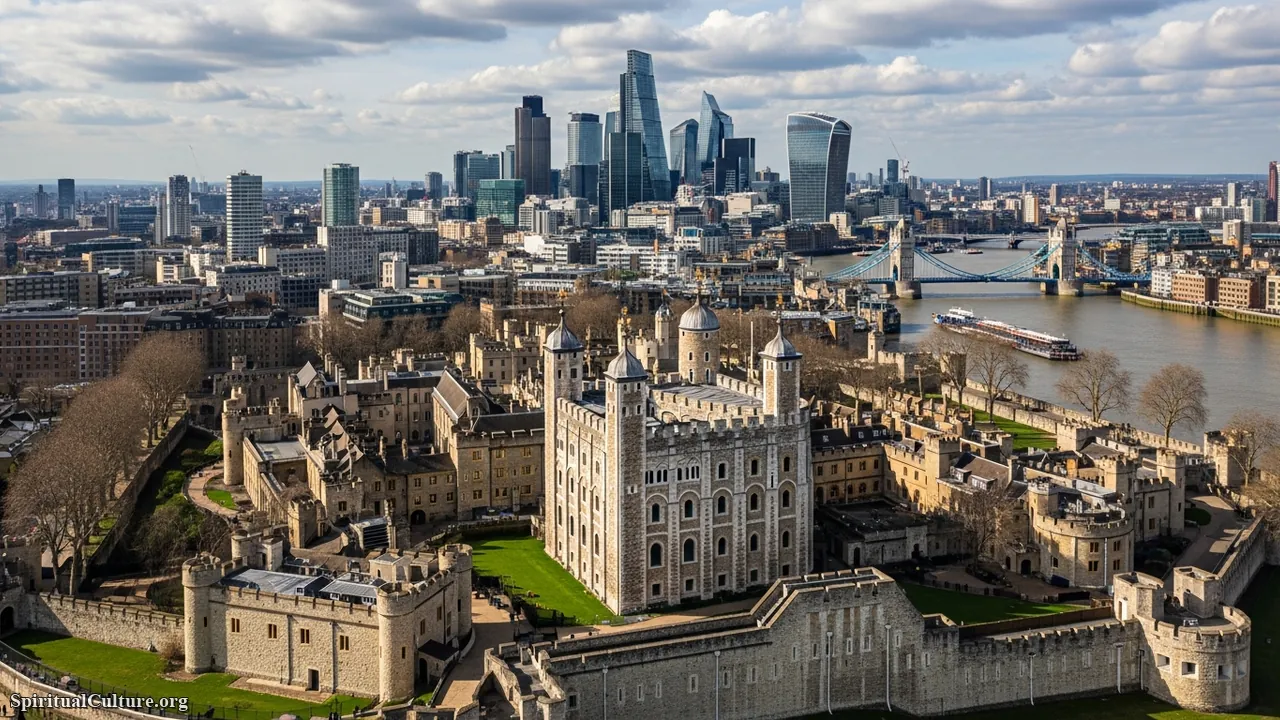
At Spiritual Culture, we rank the Tower number one because it represents the complex interplay of Sacrifice and Divine Authority. The Chapel Royal of St Peter ad Vincula is the burial place of three queens (Anne Boleyn, Catherine Howard, Jane Grey) executed within the Tower—a somber reminder of the cost of power. Conversely, the Crown Jewels, including St Edward’s Crown used in coronations, are religious artifacts, consecrated to anoint the monarch as God’s representative. The Tower holds both the sword that kills and the oil that anoints.
The Legend of the Ravens—that the kingdom will fall if they ever leave—adds a layer of totemic spirituality to the site. The Tower is the memory bank of the nation, holding its darkest fears and its brightest treasures. To understand the spiritual history of Britain, one must confront the Tower, for it is here that the drama of the human soul, in its cruelty and its majesty, has played out most vividly.
Cultural & Spiritual Highlights:
- UNESCO World Heritage Site: Recognized globally for its outstanding universal value and historical significance.
- Chapel Royal of St Peter ad Vincula: The burial place of executed queens and saints (like Thomas More), symbolizing martyrdom.
- The Crown Jewels: Houses the sacred regalia used in the religious ceremony of the Coronation.
- Yeoman Warders (Beefeaters): Ceremonial guardians who keep the oral history and traditions of the Tower alive.
Conclusion
These ten castles are far more than tourist attractions; they are the stone vertebrae of British history. From the spiritual solitude of St Michael’s Mount to the complex majesty of the Tower of London, each site offers a unique window into how the people of these isles have understood power, faith, and destiny. They remind us that while architects build with stone, it is the spirit—through legend, prayer, and memory—that grants a building immortality.
At Spiritual Culture, we hope this guide encourages you to visit these sites not just as an observer of architecture, but as a pilgrim of history. Look for the chapels hidden within the keeps, the legends carved into the rock, and the stories of the people who lived, prayed, and died within these walls. In doing so, you connect with the living heritage that continues to shape our world today.





